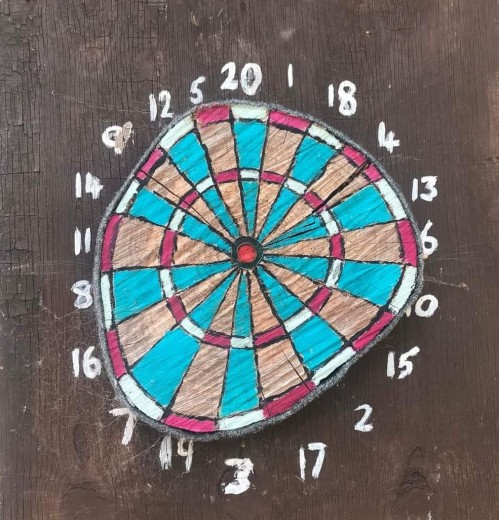Friday, June 28, 2024
Column 668
“Nuclear” Darts
“I’m a travelin’ man, I’ve made a lot of stops all over the world,” crooned Ricky Nelson in 1961. The song was a massive hit, rising to the top of the charts. Teenage girls swooned. Not widely known is that the tune was written for Sam Cooke, but his manager was not impressed. We all make mistakes.
I’ve been fortunate to be able to travel, to see a lot of places – Congo, Mongolia, Easter Island, the Okavango Delta – but for some reason girls tend to slap me rather than swoon. I am often asked where in the world, what experience has been most memorable. It’s long been impossible for me to answer. No longer…
I can now state that no place I have ever visited (or can envision ever visiting) – except perhaps the 9/11 Memorial, Vietnam Memorial, the Hanoi Hilton and the beaches of Normandy – comes close to the profound impact of walking about Peace Memorial Park in Hiroshima, Japan. And nothing in the Park comes close to the “shadows”…
As one author described it…
The shadows at Hiroshima are a haunting reminder of the brutality of the bombing that occurred on August 6, 1945, when the US B-29 bomber, Enola Gay, detonated a nuclear weapon on the city, destroying much of the architecture and killing – in many cases, vaporizing – more than 70,000 people instantly.

The intense heat of the atomic explosion caused what are called “nuclear shadows”. The blast changed the colors of surfaces like steps, walls and pavement because of the UV radiation that was emitted. When things that were soon to be vaporized blocked whatever was behind them, they didn’t allow this UV color change to happen. As a result, outlines of people and objects incinerated in the bombing left haunting shadow imprints behind on such surfaces.

Hiroshima shadow locations are found throughout the city and are the only “remnants” left of many of the human beings. Those vaporized in the blast left imprints behind – now ensuring the legacy of Hiroshima cannot be forgotten.
There’s so much more, so much gone. 70,000 people, most civilians, died instantly – another 70,000 died from radiation poisoning (the numbers are similar for Nagasaki). There’s a tree that two years after the blast somehow sprouted back to life. The domed Genbaku building, formerly the Products Exhibition Hall, now a UNESCO World Heritage Site, is the only structure that was left standing near the bomb’s hypocenter or ground zero.
I came to throw darts but was unable for hours to mentally pull myself away from the Memorial Park. Today and no doubt forever I am unable to get the shadows out of my head.
Although it felt wrong, I ended up a Bar Bee (4-11 Horikawacho, Naka-ku, Hiroshima Asahi Beer Building, Hall 7F) about a half mile from Peace Memorial Park. I needed a drink.
Bar Bee is a national chain, found in many of the major cities and darts (electronic) is among its claims to fame. There is also pool, ping pong and karaoke if you’re not athletic enough to play darts.
Darts is what Bar Bee is known for. There’s a cover: about $5. The cost for a game is 100 Yen (about 90 cents). What happened to quarters? Still, it’s reasonable. The last time I was in Japan a toothbrush cost me $13. Bar Bee has six electronic boards. There’s neon everywhere. Darts accessories are available for purchase. Shiny silver tables and chairs are situated with a great view of the playing area.
The drink menu is bilingual, and the selection of beer, wine and liquor is huge. There are more than 20 variations of whiskey. The food menu is only in Japanese but there are photos, so I was able to order something that wasn’t alive.
In short and as another visitor once wrote, “the Bee is a bullseye.”
I am compelled to add that there is one other place I’ve visited – with Stacy Bromberg and Horizon Darts’ Terry Maness – which to this day sometimes still jolts me awake at night…
Deep in the Incan ruins of Machu Picchu is a spot where children (the best looking among those who lived there) were prepared for sacrifice. Off to the side is a large stone slab, a table-like structure, where the sacrifices were performed, and blood was drained – and then another area where the bodies were set out to “dry” before being dropped off a cliff into a river far below. Many families disfigured their children so they would not be selected to die. I cannot fathom the thoughts of these children as they awaited their fate in the holding area.
It’s haunting stuff, all of this, but it brings into sharp perspective the mental health value of escaping life’s trials and tribulations by focusing on nothing but a dartboard, at least for an evening – and the pointlessness of fretting about a missed double (sometimes).
From the Field,
Dartoid








